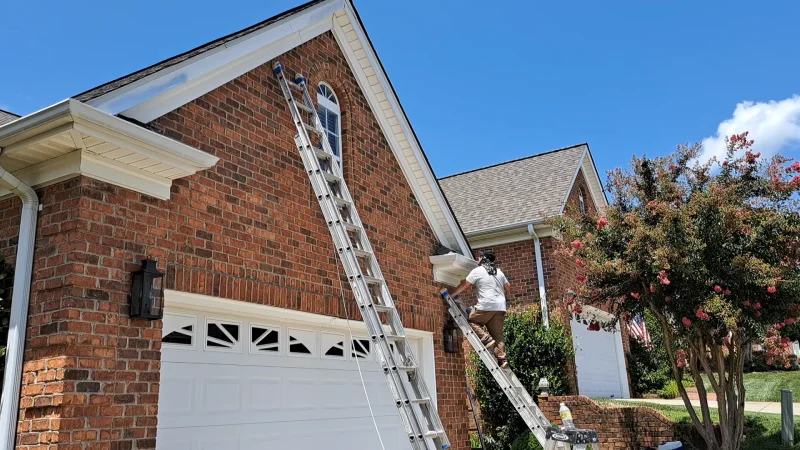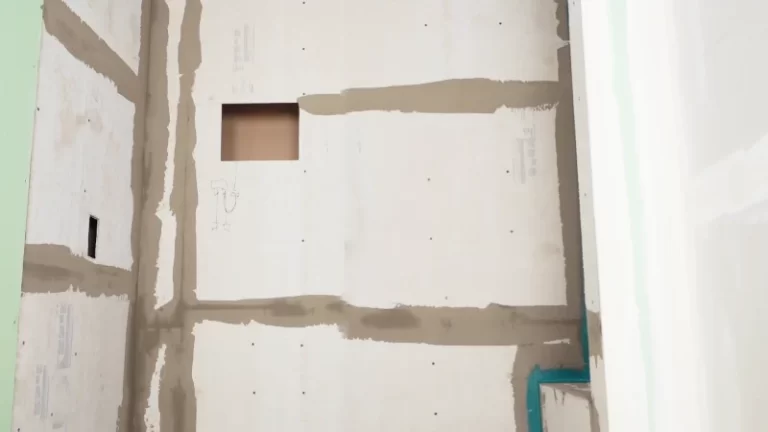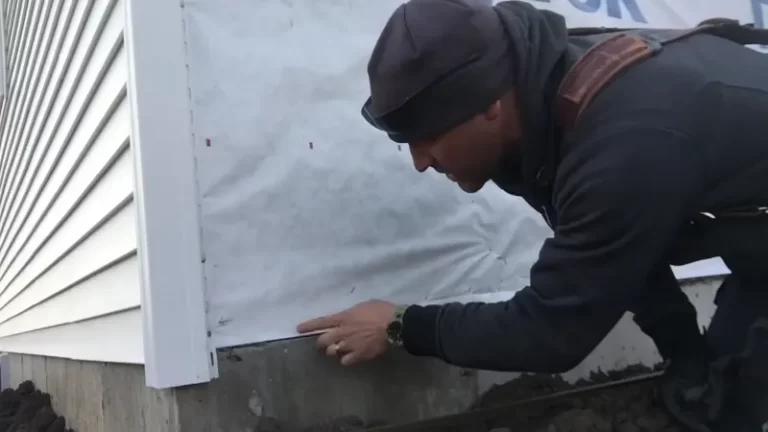Repair PVC Aluminum Trim Coil Peeling – Easy Way

PVC aluminum trim coil peeling is a common problem that can occur on exterior trim, particularly on windows and doors. This issue can be frustrating and unsightly, and if left unaddressed, it can lead to further damage and even costly repairs.
Peeling can occur for a variety of reasons, including exposure to harsh weather conditions, poor quality materials, and improper installation or maintenance. In this article, we will delve into the causes of PVC aluminum trim coil peeling, as well as explore various solutions for preventing and repairing this issue.
You'll Learn About
PVC Aluminum Trim Coil Peeling
It sounds like the peeling issue you are experiencing with the aluminum trim on your dormer windows may be due to a combination of factors, including the direction the windows face, the type of finish applied, and possibly even the quality of the aluminum itself.
To prevent the peeling from occurring again, it may be helpful to take the following steps:
- Sand the aluminum surface to remove any loose or flaking paint or finish.
- Clean the surface thoroughly with a degreaser or other appropriate cleaning solution to remove any dirt or grime.
- If the surface is in good condition, you may not need to prime it. However, if the surface is particularly porous or has been damaged, it may be helpful to apply a primer specifically designed for use on metal surfaces.
- Once the surface is prepared, you can apply a high-quality latex paint specifically designed for use on metal surfaces. Make sure to follow the manufacturer’s instructions for the best results.
- To help prevent peeling in the future, it may also be helpful to apply a clear sealant or topcoat over the painted surface. This will provide an additional layer of protection and help to prevent moisture from getting under the paint and causing it to peel.
If you continue to have issues with peeling even after following these steps, it may be worth reaching out to the manufacturer or supplier of the aluminum trim to see if they will honor a warranty repair. It’s also possible that there may be other factors at play that are causing the peeling, such as the quality of the aluminum or the type of finish applied. In this case, it may be helpful to consult with a siding contractor or other professional to help determine the cause of the problem and suggest a solution.
Causes of Peeling
There are several factors that can contribute to the peeling of PVC aluminum trim coil. One of the main causes is exposure to UV light and extreme temperatures. Over time, the intense heat and light from the sun can cause the finish on the aluminum to break down, resulting in peeling.
Additionally, moisture can also play a role in the peeling process. If the aluminum trim is not properly sealed or if there are gaps or imperfections in the finish, moisture can seep in and cause the finish to lift and peel.
Another potential cause of peeling is the quality or type of finish applied to the aluminum trim. If a low-quality finish is used, it may not provide sufficient protection against the elements and could peel or flake off over time. Similarly, if the wrong type of finish is used, it may not be compatible with the aluminum and could cause peeling to occur.
There may also be issues with the aluminum itself that contribute to peeling. For example, if the aluminum has poor adhesion or is prone to corrosion, it may be more susceptible to peeling. In these cases, the root cause of the peeling may need to be addressed before the issue can be effectively resolved.
Preventing Peeling
There are several steps you can take to prevent peeling from occurring on your PVC aluminum trim coil. One of the most important steps is to properly prepare the surface before painting or applying a finish.
This may include sanding the surface to remove any loose or flaking paint or finish, and cleaning the surface thoroughly with a degreaser or other appropriate cleaning solution to remove any dirt or grime.
If the surface is in good condition, you may not need to apply a primer. However, if the surface is particularly porous or has been damaged, it may be helpful to apply a primer specifically designed for use on metal surfaces. Sometimes they might get stick to the basement floor.
When selecting a paint or finish product, it is important to choose a high-quality option specifically designed for use on metal surfaces. Latex paint is generally considered a good choice for aluminum, as it is flexible and has a good chance of staying adhered to the metal. Make sure to follow the manufacturer’s instructions for the best results.
In addition to painting or finishing the aluminum trim, it may also be helpful to apply a clear sealant or topcoat to provide an additional layer of protection. This can help to prevent moisture from getting under the paint or finish and causing it to peel. Keep in mind that it is important to reapply these protective layers periodically to ensure that they remain effective.
Repairing Peeling
If peeling has already occurred on your PVC aluminum trim coil, there are steps you can take to repair it. The first step is to sand and clean the surface to remove any loose or flaking paint or finish. Make sure to follow the same preparation steps outlined above to ensure that the surface is ready for the new coat of paint or finish.
Once the surface is prepared, you can apply a new coat of paint or finish following the manufacturer’s instructions. It is important to use a high-quality product specifically designed for use on metal surfaces to ensure the best results. You may also want to consider applying a clear sealant or topcoat to help protect the new finish and prevent peeling from occurring again in the future.
If the peeling is severe or persistent, it may be necessary to seek professional repair or replacement. A siding contractor or other professional can assess the condition of the aluminum trim and suggest the best course of action.
This may involve removing and replacing the damaged trim, or repairing the existing trim using specialized techniques. In either case, it is important to address the issue as soon as possible to prevent further damage and to ensure the longevity and appearance of your home’s exterior.
Additional Tips to Prevent Peeling of Pvc Aluminum Trim Coil
Here are a few additional tips that may help prevent peeling of PVC aluminum trim coil:
Choose the Right Type of Finish
In addition to using a high-quality paint or finish, it is important to choose a product that is specifically designed for use on metal surfaces. Latex paint is generally considered a good choice for aluminum, as it is flexible and has a good chance of staying adhered to the metal. You may also want to consider using a clear sealant or topcoat to provide an additional layer of protection.
Avoid Over-painting
Applying too many layers of paint or finish can lead to peeling, as the weight of the additional layers can cause the finish to become brittle and crack. If you are applying a new coat of paint or finish over an existing layer, make sure to follow the manufacturer’s instructions and use the recommended number of coats.
Repair Any Damage Promptly
If you notice any chips, cracks, or other damage to the aluminum trim, it is important to repair it as soon as possible. This will help prevent moisture from getting under the finish and causing peeling to occur. You can repair small damages by sanding and filling the area with a metal-friendly putty or filler, then refinishing the surface.
Regularly Inspect and Maintain the Aluminum Trim
To help prevent peeling, it is important to regularly inspect the aluminum trim for any signs of damage or wear. This may include checking for loose or flaking paint or finish, as well as looking for any dents, scratches, or other damages. If you notice any issues, make sure to repair them promptly to prevent further damage.
Keep the Aluminum Trim Clean
Over time, dirt and grime can build up on the aluminum trim, which can contribute to peeling. To prevent this from occurring, make sure to regularly clean the trim using a mild detergent and a soft cloth. Avoid using abrasive cleaners or scouring pads, as these can damage the finish.
Conclusion
In conclusion, the peeling of PVC aluminum trim coil can be a frustrating and unsightly problem that can impact the appearance and longevity of your home’s exterior. The main causes of peeling include exposure to UV light and extreme temperatures, moisture, and issues with the quality or type of finish applied to the aluminum.
To prevent peeling from occurring, it is important to properly prepare the surface before painting or applying a finish, and to use high-quality products specifically designed for use on metal surfaces.
If peeling has already occurred, it can be repaired by sanding and cleaning the surface and applying a new coat of paint or finish. In severe cases, professional repair or replacement may be necessary.
By following these tips and taking proactive measures to prevent peeling, you can help protect your home’s exterior and maintain its beauty and value.



